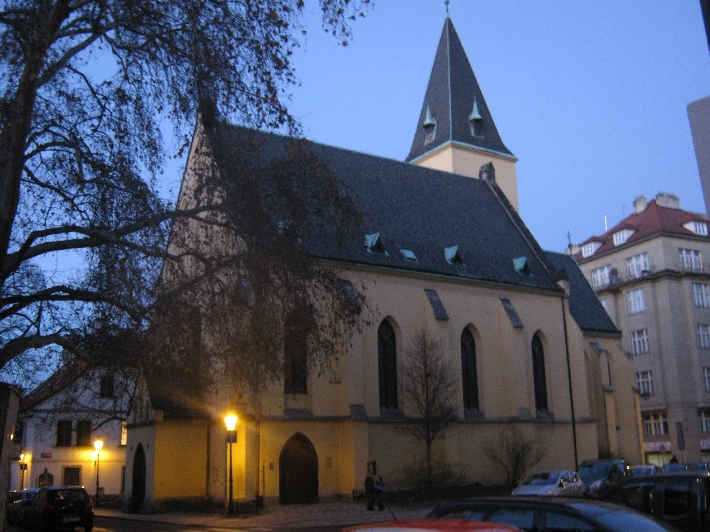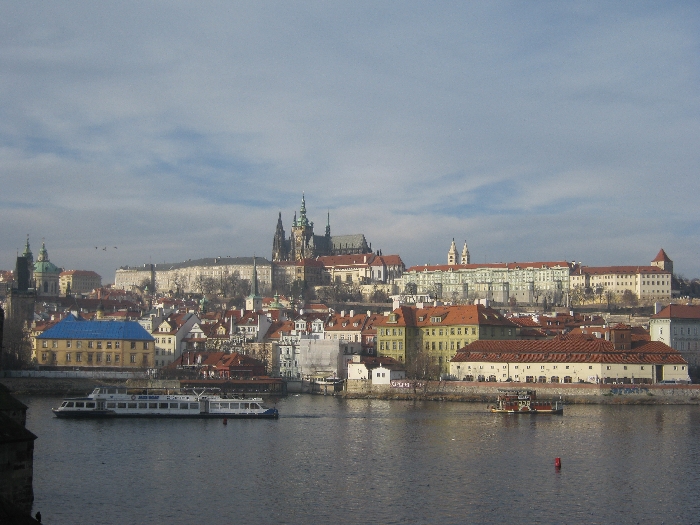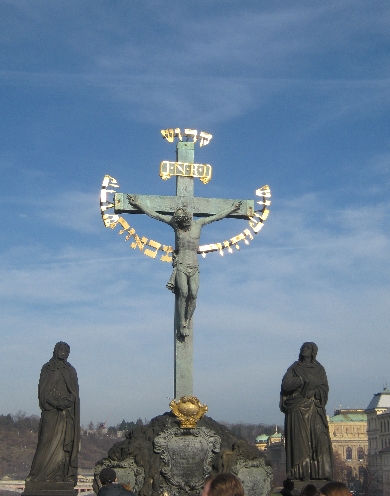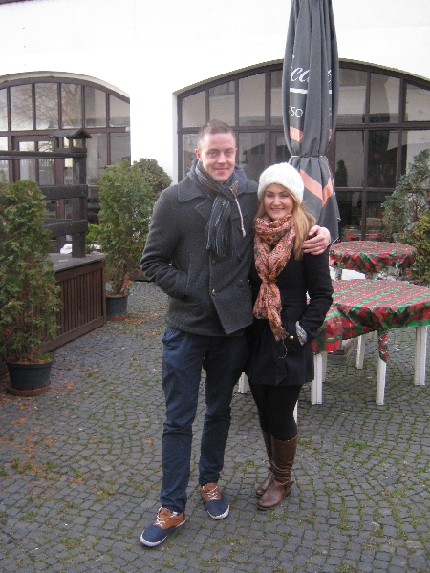
As I have explained previously in this blog, the Prague Anglican congregation legally functions as the English-speaking parish of the Old Catholic Church in the Czech Republic or Farní obec Starokatolické církve pro vericí anglického jazyka v Praze. This came about as the result of a covenant signed in September 2000 by Bishop John Hind, the then Anglican Bishop of the Diocese in Europe, and Bishop Dušan Hejbal of the Old Catholic Church in the Czech Republic.
Under the covenant, we are treated both as a Chaplaincy in the Anglican Diocese in Europe, and as a constituent parish of the Czech Old Catholic Church. One consequence of this is that I am expected, along with one lay person from my congregation, to attend any meeting of the Synod of the Old Catholic Church in the Czech Republic when they take place. Fortunately, this is normally only once every three years as the meetings, which usually take place over a couple of days, are conducted entirely in Czech 🙁
Back in October 2010, Sybille I broke into our holiday to attend a Synod meeting held in Moravia, as mentioned in this post, whilst three years later in 2013, I attended the next Synod meeting, along with a lay representative, which was conveniently held in Prague. But last year, Bishop Dušan called an extra Synod meeting, in order to gain approval for his proposal to stay on as Bishop for a further three years beyond his sixty-fifth birthday in July 2016, exercising a provision within the Church’s constitution. Unfortunately, the date of that Synod meeting fell in the middle of our previously booked holiday in Poland, so I was unable to attend, nor could we find a lay representative to go either.
At that meeting in October 2015, the Synod decided not to accept Bishop Dušan’s proposal. Thus was set in motion, a procedure that had not happened for over twenty years – a further Synod meeting was called to take place in April 2016, to elect a new Old Catholic Bishop. As I have said numerous times, I do realise that ‘a new Old Catholic Bishop’, does sound like a contradiction in terms 🙂
This Synod meeting took place between the evening of Thursday 7th and the morning of Saturday 9th April at Želiv Monastery, located in the Vysocina/Highlands, about 100km south-east of Prague. I was accompanied by one of my Churchwardens, Stephen Weeks, who the Church Council had previously elected to be their lay representative. After an opening Eucharist, followed by our evening meal, the Synod meeting began.
Fortunately, whilst having supper, Stephen and I were overheard speaking to each other in English, by a lay member of the Synod called Vlad’ka. Like many of the Old Catholic laity, she had no idea of our existence as an English-speaking parish in the Czech Old Catholic Church and asked us in English, who we were and what we were doing there. Once we had explained, she kindly offered to interpret for us as she is a teacher of English to vocational students in Brno. She sat between us, interpreting all that was being said, enabling Stephen and I to follow the proceedings.
The evening session began with the two candidates to be the new Bishop, each making a presentation as to their understanding of the role and what they hoped to achieve if elected. There was then a short break, during which time written questions could be submitted to the moderator for the candidates to answer in the following session. Stephen and I compiled a couple of questions which we wanted to ask, which Vlad’ka kindly translated into Czech for us to submit.
The question and answer session went on until it was 22.00 which had previously been agreed as the finishing time for that evening. But it resumed again after breakfast, the following morning. Issues raised included the candidates attitude to same-sex blessings, what was the first things they would do upon becoming bishop and the question of the ordination of women as priests. Currently, the Czech Old Catholic Church only ordain women deacon, unlike their fellow Old Catholics in the Netherlands, Germany, Austria and Switzerland who do ordain women as priest.
We raised the specific question of their attitude to us being able to advertise for a successor to me, being open to ordained Anglican priests of either gender. My Church Council are unanimous that this should be the case, and fortunately we now have an Archdeacon and Bishop who are committed to supporting us in this. We did not get as clear an answer as we would like from the candidates, but we certainly did not get an outright rejection on the issue.
By the middle of Friday morning, there were no further questions. So we moved to a coffee break, to be followed by the election of the new Bishop. However, before the election could take place, a technical issue was raised. There were meant to be fifty-six Synod delegates but only fifty-five were present. The constitution provides that to be elected, a candidate needs a three fifths majority. Was it to be three fifths of fifty-five or fifty-six? After some debate, we voted that it should be three fifths of fifty-six 🙂
It took three rounds of voting before a conclusive result was achieved. The Synod elected Pavel Stránský, currently the Old Catholic priest in Zlín, to be their new Bishop. He was given a standing ovation and presented with a chain and crucifix, showing him to be the Bishop-elect. He then made a formal declaration, signed various papers and both he and Bishop Dušan were presented with flowers.
After lunch, the Synod meeting elected a new Synodal Council, who with the new bishop, will run the Church for the next three years. Various other committees were also elected and then, with no further business to conduct, the meeting ended with the singing of the Te Deum.
Exactly when Bishop-elect Pavel will be consecrated has yet to be decided but I’ve been told informally that it will probably be sometime in September or October.








